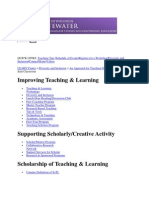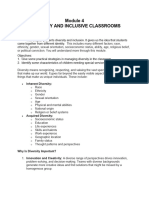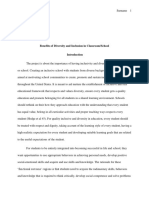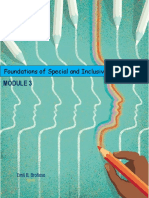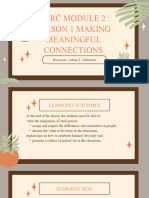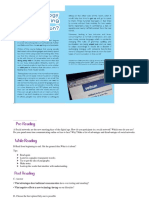What is inclusion and how do we implement it?
Author: Varinder Lekh
We all seem to talking about inclusion and the importance of it.
There are special departments in many educational institutions, especially in
the public sector, which focus just on how to create and maintain inclusive work
environments.
So what is inclusion and why is it important? It is not just about including
learners with Specific Learning Differences (SpLDs). Inclusion is a basic right of
everyone and its objective should be to embrace everyone regardless of race,
age, gender, disability, religious and cultural beliefs and sexual orientation.
When we have true inclusion, it is when we have removed all barriers,
discrimination and intolerance. When implemented properly, it should make
everyone feel included and supported, whichever environment they are in.
What does inclusive practices mean, and how can we ensure that all
our classrooms and work environments are truly inclusive?
Inclusion is about how we structure our schools, our classrooms and our
lessons so that all our students learn and participate together. An inclusive
classroom is one that creates a supportive environment for all learners,
including those with learning differences, and can also challenge and engage
gifted and talented learners by building a more responsive learning
environment.
Inclusivity also means respecting people from all backgrounds and cultures, and
by teaching our students the importance of this we create a much more
tolerant and understanding environment, not just in the classroom and school
but also in wider society.
�An inclusive school or classroom can only be successful when all students feel
that they are truly part of the school community. This can only happen through
open, honest discussion about differences and understanding and respecting
people from all abilities and backgrounds. An inclusive environment is one
where everyone feels valued.
Here’s how you can help promote inclusivity in your classrooms:
Think about your own values and approach to disability, gender, race, etc. Does
how you teach acknowledge the experiences of the students from different
backgrounds? Is your approach non-stereotypical? Using stereotypes can
alienate and marginalise people, and using generalisations can have a negative
effect on learners. Do you encourage alternative perspectives, debate ideas,
create an environment which is open to representation of different viewpoints?
Are your students treated as individuals, encouraged to share their own lives
and interests? Building a good rapport with your students helps with this. If
your students feel comfortable and supported by you, then they will be more
open to sharing their ideas, thoughts and interests with you and the other
students. This can be achieved quite easily. On the first day of class, share
some information about yourself with your students. Tell them what your
interests are, why you like teaching, etc. Another activity you could do in the
first lesson is to write five words on the board about yourself. Tell your students
that they have to ask you questions to find out what the words are the answers
to. Then get the students to do the same activity for themselves in groups.
In an ELT racially diverse classroom, have you thought about your own
conscious or unconscious biases about people from other cultures? Do you have
different expectations of students of colour than you do of white students, of
male or female student, of students from the LGBTQ community?
Create a supportive, respectful environment: promote diversity and equity.
‘Classroom climate is affected not only by blatant instances of inequality
directed towards a person or group of people, but also by smaller, more subtle
"micro-inequities" that can accumulate to have significant negative impacts on
learning’ (Hall, 1982).
This can be created by thinking about a couple of things: Think about how you
deal with student–student interaction. The way you deal with negative
interaction is very important.
Also think about the interaction between teacher and student. Are you an
approachable teacher? ‘Students who felt that their teacher was approachable,
had concern for minority student issues and treated students as individuals and
with respect reported a better course climate’ (Astin, 1993). If you establish
some ground rules about acceptable and unacceptable behaviour, this will help
students understand more clearly both your and other students’ expectations.
You can do this at the beginning of each course and involve your students in
putting together what everyone feels is acceptable and unacceptable. It is
always a good idea to revisit this from time to time as a reminder to everyone.
� Have high expectations of all your students. Research shows that students
respond better when they feel that their teacher has faith in their abilities and
is not focusing on their inabilities.
Plan learning which includes participation from everyone and encourages
success. You can do this by creating an environment which is personalised to
the students’ needs and talking about learning that focuses on what students
can do and what they would like to do next. This can be done through tutorials,
individual learning plans (ILPs) and short- and long-term goal-setting by the
learner so that they feel they have ownership of their learning. If you provide
students with opportunities to tell you what is working and what needs
attention, you will have a better idea of what to focus on.
Take a ‘community’ approach to learning and teaching. Inclusive values are
developed through a student’s lived experiences and their exposure to other
cultures and world-views. Bring your community into the classroom and take
your classroom out to the community.
And a final thought on why inclusion is important:
‘Even though some of us might wish to conceptualize our classrooms as
culturally neutral or might choose to ignore the cultural dimensions, students
cannot check their sociocultural identities at the door, nor can they instantly
transcend their current level of development … Therefore, it is important that
the pedagogical strategies we employ in the classroom reflect an understanding
of social identity development so that we can anticipate the tensions that might
occur in the classroom and be proactive about them’ (Ambrose et. al., 2010, p.
169–170).
Creating an inclusive environment will not only help those students with
learning differences, it will also support those students who don’t have a
learning difference by making them more aware, tolerant and understanding of
each other.
References:
Hall, S. (1982). The classroom climate: A chilly one for women? Washington
D.C.: Association of American Colleges.
Ambrose, S. A., Bridges, M.W., DiPietro, M. & Lovett, M.C. (2010). How
learning works: Seven research-based principles for smart teaching. San
Francisco, CA: Jossey Bass.
Astin, A. W., (1993). What matters in college: Four critical years revisited. San
Francisco, CA: Jossey Bass.















